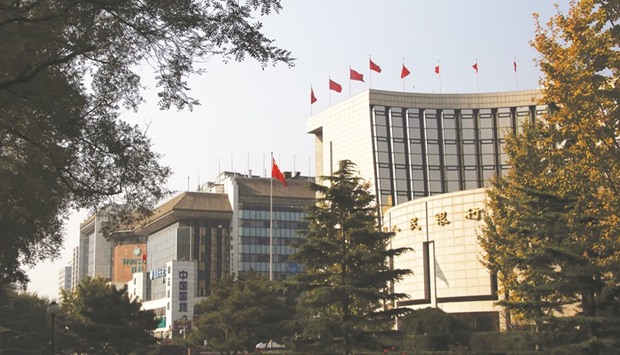Just two months before it is to be included in the International Monetary Fund’s (IMF) influential basket of global reserve currencies, a new report distributed by the Federal Reserve is casting doubt on the ability of China’s yuan to achieve haven status for investors.
While the yuan performed better than some of its major peers from 2011 through late 2015, its relative value has fallen since then against the traditional haven currencies as market volatility increased, according to a study published last week.
The report tested the relationship between a gauge of stock market price swings and the value of the yuan against the US dollar, yen, euro, the British pound and the Swiss franc, currencies perceived as safe exchange rates because their value rises relative to others during uncertainty.
“Overall our findings do not support the suggestion that the renminbi is currently a safe haven currency and in that sense question the notion that the renminbi is progressing towards safe haven currency status,” Rasmus Fatum and Guozhong Zhu of the University of Alberta and Hitotsubashi University’s Yohei Yamamoto wrote in the report published by the Federal Reserve Bank of Dallas, using the official name for the yuan.
President Xi Jinping’s efforts to promote the yuan’s international usage culminated last year when the International Monetary Fund added it to its benchmark basket of reserve currencies, making it part of the Special Drawing Rights, or SDR, effective October 1, 2016.
Yet, the yuan has declined 2.8% this year, taking a toll on the currency’s global appeal amid concern about the strength of economic growth and uncertainty about the People’s Bank of China’s (PBoC) commitment to letting the currency trade more freely.
The PBoC didn’t respond to a faxed request for comment on the report.
Transparent government institutions, predictable policies and liquid markets help make a country’s currency a haven destination for investors during times of market turbulence, all areas where China has sometimes struggled.
“Just because you’re a reserve currency doesn’t mean you have the status of a safe haven,” Win Thin, Brown Brothers Harriman’s head of emerging-market currency strategy in New York, said by phone on Thursday.
“There is not enough confidence in China, its institutions don’t have a reliable track record and even though the IMF recognised that China is a growing player in the world economy, the yuan has a long way to go before it can be viewed as safe.”
A surprise devaluation of the yuan a year ago combined with more unexpected intervention in January followed by restrictions on the flow of money across the country’s borders have stoked concern about the leadership’s commitment to a more free exchange rate. Such missteps have detracted from reforms including the opening of onshore markets and improved data disclosure designed to place the yuan on par with the dollar, euro, yen and British pound.
Making the yuan an international currency is not only about Chinese global political ambitions.
The country is opening its capital markets to foreign investors to try and draw money as the slowest economic growth in a quarter century drives funds abroad. That in turn has put downward pressure on the yuan, prompting the PBoC to step up intervention.
China’s central bank kept the yuan from slipping past 6.7 per dollar last week by strengthening its reference rate, which limits onshore moves to 2% on either side, even as the greenback advanced.
This spurred speculation it isn’t sticking to its stated policy of following the direction of the market. The currency, which broke a six-week run of losses to close 0.12% stronger last week, was trading at 6.6790 a dollar yesterday evening in Shanghai.
The Chinese currency accounted for 1.72% of global payments in June, the smallest portion since October 2014, according to the Society for Worldwide Interbank Financial Telecommunications. Like in May, the yuan was ranked sixth, after the US dollar, euro, pound, yen and Canadian dollar.
The Fed report found that during the full five-year period through April 2016 the yuan fell relative to the dollar and the yen, while it increased against the pound and the euro during spikes in the Chicago Board Options Exchange Volatility Index, a measure of investor expectations for swings in the US equity market.
“This provides evidence consistent with some degree of safe haven currency behaviour of the renminbi,” the researchers wrote. However, since the IMF’s SDR announcement in November, “we find that the relative value of the renminbi vis-à-vis all traditional safe haven currency candidates decreases as market uncertainty increases,” they said.

The People’s Bank of China headquarters (right) is seen in Beijing. The PBoC kept the yuan from slipping past 6.7 per dollar last week by strengthening its reference rate, which limits onshore moves to 2% on either side, even as the greenback advanced.
